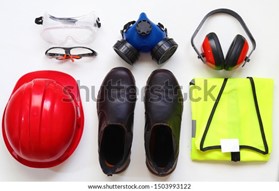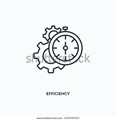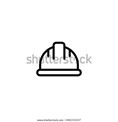Regardless of the type of carpentry project that you will completing, the basic process for working with tools is the same. You will explore the planning and preparation process for the whole project in other areas of your study. In this unit, we are going to focus on selecting and using tools and equipment.
 |
 |
 |
 |
|
Step one - Planning and preparation
|
Step two - Selecting tools and equipment
|
Step three – carrying out the carpentry job.
|
Step four - Cleaning up and tool maintenance
|
Being able to identify a particular tool is important; imagine a restaurant patron asking for a spoon from the waiter and receiving a knife. Once you can identify a tool, you also need to know what it is designed to do. For example, a good tradesperson would never use a wood chisel as a screwdriver or a flat-bladed screwdriver as a chisel.
There will rarely be a day in your building or construction career that you don’t rely on tools and equipment at work. Tradespeople who use their tools effectively and maintain them in good working order are more likely to:
|
Work efficiently |
Work safely |
Produce quality outcomes |
As you’ll be using a range of tools on a number of different sites in your career, you need to be aware of workplace requirements. Workplace policies, procedures and work instructions may change depending on the site. Before using any equipment you should be familiar on these processes which will typically be covered in a site induction.

Nearly all tools and equipment come with manufacturer instructions and/or specifications. They may be a simple document which describes the best way to store and maintain the tool. Or, for a power tool, the instructions may incorporate safety instructions, guidance for use, set-up instructions and so on.
Regardless of the complexity of the instructions and specifications from the manufacturer, it is important to review them and use the tool in line with them. Instructions and specifications should also be readily accessible to anyone else who may use the tool.
Manufacturer specifications vary depending on the brand and model of the tool or equipment that you are using. Do not assume that, because you are familiar with one model from a brand, that a model that looks the same will have the same specifications. Always review the manufacturer instructions before beginning work.

It is essential that you utilise appropriate PPE whenever you are in a building and construction environment. For many building and construction worksites, they have a minimum requirement for PPE of a hard hat, safety boots and a high vis vest. However, different worksites will have different requirements (for example, eye protection and hearing protection are two common additions to the minimum requirements).
We have used the term ‘standard precautions’ throughout this module to refer to your organisation’s minimum requirements. Where you see ‘standard precautions’ this means that you can assume that you must, at a minimum, be wearing safety boots, appropriate clothing for a construction environment and any other PPE that meet the minimum requirements for the workplace.
Ultimately, your PPE requirements will change depending on the tools and equipment that you are using. Remember to maintain awareness of your surroundings and ensure that you adjust your PPE according to the tool or equipment that you (or others around you) are using.
In many cases, before you commence work, you will need to carry out a site inspection. This ensures the area you and the team are working in is safe and hazards are minimised where possible. The site inspection becomes an integral part of your planning as it may have implications on time frames later if inadequate inspections have taken place. This is particularly important once you have started on the tools. You will need to ensure the areas you are working in are safe to do so especially when there are power tools being operated. When carrying out a site inspection, you need to:
- ensure the site matches what you have seen in the plans and specs
- check that new hazards haven’t emerged (for example, damage caused by bad weather)
- ensure services have been properly identified, marked and disconnected or isolated
- erect signs and barriers
- identify power sources
- confirm environmental requirements and identify any new environmental issues.
Once the site inspection has taken place, you can then use the information you have obtained to help you update your work flow plan and clarify any discrepancies and to update your planning and preparation work.
Assess hazards and apply risk controls
The site should be regularly assessed for hazards prior to commencing any work, especially where power tools are concerned. The following table outlines a list of some hazards that may be present and the actions which you could take to address them.
|
Trip hazards/ obstructions
|
If possible, remove the obstruction. If obstruction is too large or cannot be moved, create alternate walkway for workers to bypass |
|
Faults in power
|
Consult with workplace supervisor or electrician and isolate the area. Do not use any electrical equipment when power is faulty |
|
Serviceability and function of tools you are using, including damaged safety guards frayed cords
|
Remove the tool from use and label not in use. |
|
Hazardous substances
|
If a hazardous substance has been identified, area needs to be isolated, signage needs to be placed and barricades around the area need to be erected to ensure no one enters the work area until substances have been addressed. |
Signs and barricades on site are critical to ensuring your safety and the safety of everyone else on site. Respect signs and barricades. In relation to tools and equipment, pay particular attention to signs about hearing protection, dust, and eyewear.
Watch this video from Safe Work Australia which highlights the importance of being aware of your surroundings and paying attention to signs and barriers.
Selection of controls
When using tools, the tasks that are carried out become significantly riskier, therefore, it is essential you are aware of the risk controls that need to be considered. Remember, whatever safety controls you have in place, need to be checked regularly to ensure they are still effective. When closely examining tools and equipment, there are specific risk controls which are applicable, these include:
Engineering controls
Engineering controls refer to the devices and mechanisms which have been integrated to the design of equipment or a in place specifically for safely. As you will come to find, these integrated safety mechanisms are very effective and are reliable for keeping the user and other around them exposed to significant hazards.
The following are some engineering controls you will need to be familiar with when using tools
Guards on tools and equipment
You will often find, there are guards on power tools that have a moving blade such as a circular saw, bench saw or an angle grinder, just naming a few. The guard is there to protect (or guard) you (the user) from material off cuts or waste from being projected in your direction. In addition to this, the guards are in place to ensure fingers and hands are not exposed close to the blade causing serious injury or unintentional amputation. The purpose of the guard extends further to protecting the user from any faulty blades or discs from propelling in the user’s direction.
You must never remove the guard while the tool is being used, in fact, there should be little to no need for the guard to be moved at all when the tool is operating. Many of these tools have been designed so the guard cannot be moved from its safety position until the tool has been disconnected from the power.
Temporary fencing, barricades, and signage
Barricades, fencing and signage can be put into place as an addition risk control to protect not only workers but members of the general public or by passers to the jobsite. Fencing off the jobsite prevents unassigned personnel from entering a designated work zone where tools are likely to be operated. Fencing and barricades can be as simple as a hi-vis tape, or timber or steel fencing to barricade the area. Signage works in a similar way, warning those that construction activity is taking place.
Sequence of work
The sequence in which work is carried out falls under administrative controls and is in fact one of the most simple and effective risk controls. All is needed is some careful consideration to the planning of a task. Consider the times in which trades are scheduled onto jobs, take the roof tiler and the gyprocker. The last thing the gyprocker needs is a tile falling from the roof while they are working causing a serious and possible fatal injury. Therefore, when scheduling time for trades, becomes imperative for safety. Ensure their times do not clash, the gyprocker is not to complete their work until the roof tiler has finished theirs, or vice versa, so long as the work is not being carried out at the same time.
PPE
As you will have become aware, PPE is the last line of defence when it comes to protection of hazards within the workplace. All other controls need to be in place to help minimise the risk, however diligence and care must be taken regardless of the other controls that are in place.
When it comes to using tools and equipment, you will require PPE in addition to the engineering and administrative controls in place.
Some of the common types of PPE you will require when using tools and equipment include:
- Safety helmets
- Safety spectacles
- Goggles
- Face shields
- Earmuffs/ earplugs
- Dusk masks/ respirators
- Gloves
- Safety boots
- Protective clothing including hi-vis, leather aprons.
Locating services
When locating services, you should consider the relevant people on site including your WHS and site supervisor and fist aid officer. Other services you may need to locate are the contacts of plumbers or electricians, which can be found on planning and specifications




